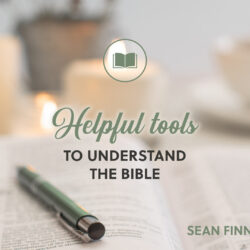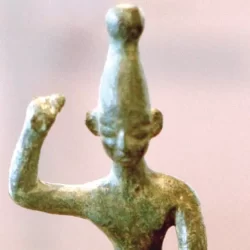Today we are beginning a major new class on how we get our English Bibles. I’m so excited about sharing with you so much about what I’ve learned in doing the research for this project. We’re going to have a great time together. My goal here is to cover the transmission of manuscripts and translation process so you understand where Bibles come from. In fact, I was thinking of calling this class, “Where Bibles Come From,” but when I searched for that phrase the search engine in its infinite wisdom had auto corrected it to “Where do babies come from,” which needless to say wasn’t the target audience for this material.
Today marks part one of this class, How We Got the Bible, and our focus will be on the manuscripts that underlie the Masoretic Text. You’ll learn about the Aleppo Codex: probably the most accurate Masoretic Text on the planet. We’ll cover the Leningrad Codex which to this day dominates textual studies since it is the oldest complete Hebrew Bible. We’ll look at a handful of other important manuscripts in an effort to begin understanding where our Bibles come from.
Introduction to How We Got the Bible
1: The Masoretic Text
—— Books ——
- Old Testament Textual Criticism by Ellis Brotzman and Eric Tully
- The Aleppo Codex by Matti Friedman
—— Links ——
- Check out all the lectures in How We Got the Bible
- See what other classes are available here or on the Restitutio Classes podcast (subscribe in Apple, Spotify, RSS feed)
- If you’d like to support Restitutio, you can donate here.
- Intro music: Good Vibes by MBB Attribution-ShareAlike 3.0 Unported (CC BY-SA 3.0) Free Download / Stream: Music promoted by Audio Library







I’m extremely excited about this class, I love textual criticism and I find that most laypersons who are Christians seem to have no real understanding of the basics of manuscripts, transmission or variants. I would like to request that at some point, could you please help explain the symbols for the different manuscripts. When I pick up Bruce Metzger’s textual commentary or the NET study Bible and look at the footnotes that mention codex A, B, C, Sy, etc, what all of these mean. Some of them are easy enough to figure out but some symbols I have no idea how to find out which manuscripts they refer to, and I have trouble finding a complete comprehensive source for this. Thank you very much for all your work and I hope this comment made some sense. God bless.
Devon,
I’ll be sure to hit that when we get to it. For now, here’s a helpful pdf that should give you some insight. Also, there’s usually an abbreviations page at the beginning or end of the TCGNT.
Thank you so much
Thank you for this wonderful series